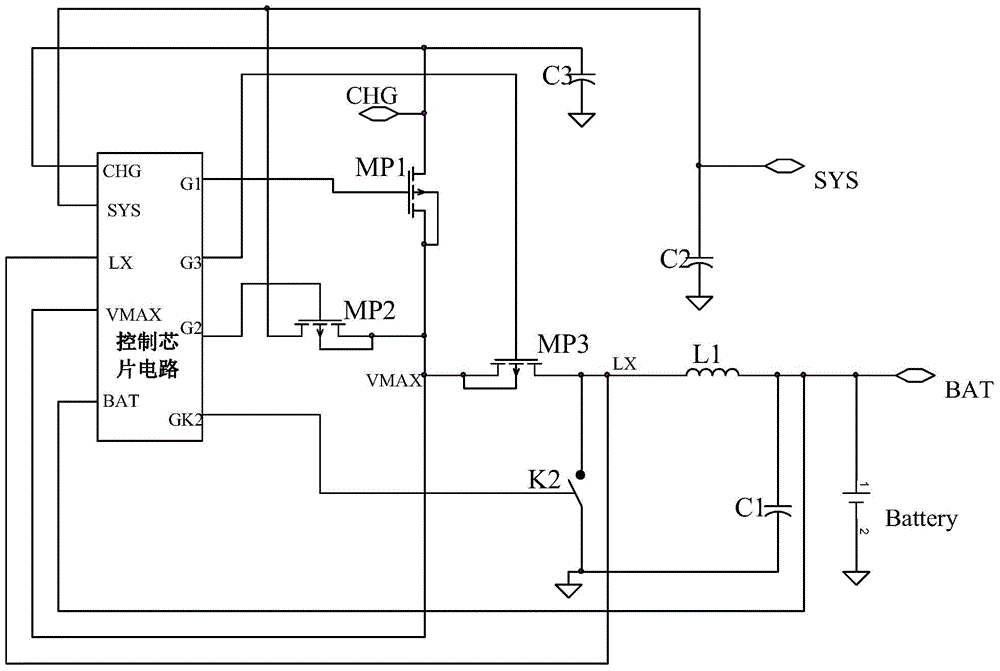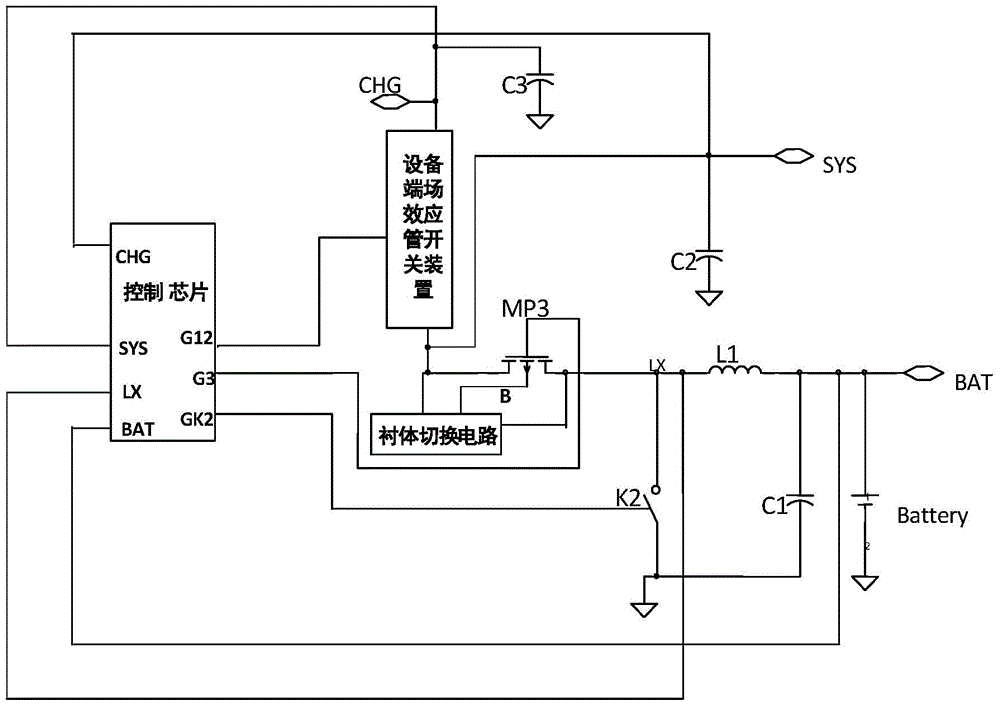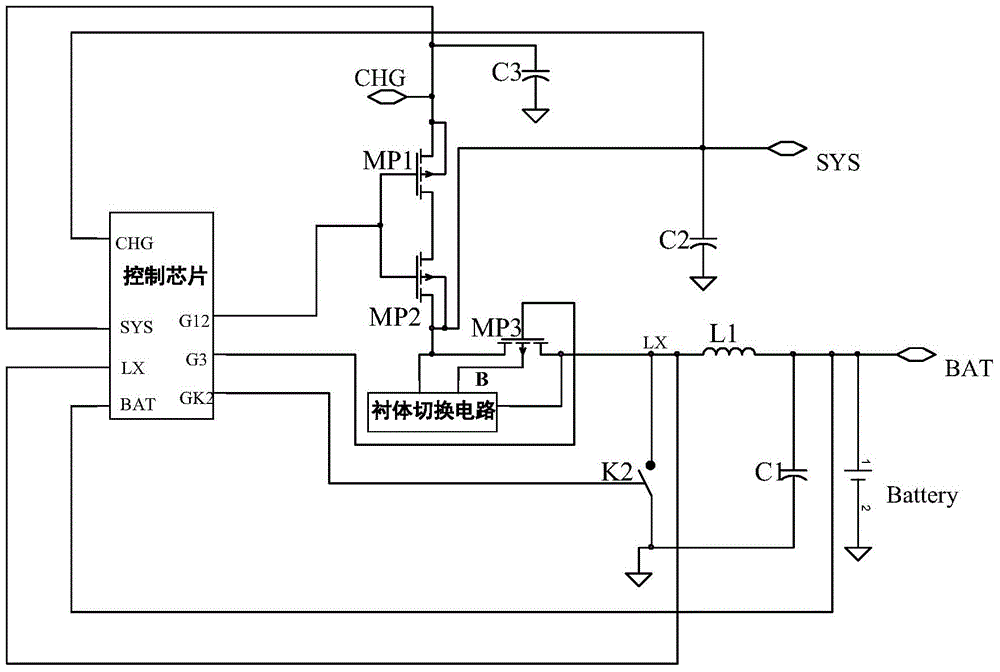Device capable of simultaneously conducting power supplying and charging on mobile electronic device
A technology for mobile electronic equipment and charging devices, which is applied to battery circuit devices, circuit devices, current collectors, etc., can solve the problems of simultaneous power supply and low power supply efficiency of charging power, so as to improve power supply efficiency, improve design flexibility, and reduce resistance Effect
- Summary
- Abstract
- Description
- Claims
- Application Information
AI Technical Summary
Problems solved by technology
Method used
Image
Examples
no. 1 example
[0034] Such as figure 2 As shown, the present invention provides a device capable of supplying power and charging to mobile electronic devices at the same time, including: a control chip, a field effect transistor switch device at the device end, a field effect transistor at the battery end (hereinafter referred to as MP3), and a device for accessing mobile electronic devices. The mobile device terminal (hereinafter referred to as SYS), the adapted power supply terminal (hereinafter referred to as CHG) used to connect to the adapted power supply, the battery terminal used to connect to the battery (hereinafter referred to as BAT), the charging switch (hereinafter referred to as K2), Charging inductance (hereinafter referred to as L1), wherein, the adapted power supply terminal, mobile device terminal, and battery terminal are all grounded via filter capacitors, as shown in C1, C2, and C3 in the figure; the control chip includes an adapted power supply terminal input pin (for ...
no. 2 example
[0038] Such as image 3 As shown, the device end field effect transistor switching device includes a first field effect transistor (hereinafter referred to as MP1) and a second field effect transistor (hereinafter referred to as MP2) connected in series, and the drain of the first field effect transistor is connected to the The adapted power supply terminal, the source of the first field effect transistor is connected to the drain of the second field effect transistor, and the gates of the first field effect transistor and the second field effect transistor are connected to the device terminal switch control pin, the drain of the second field effect transistor is connected to the source of the battery terminal field effect transistor and the terminal of the mobile device, and the drain of the battery terminal field effect transistor is connected in series via the inductor to Battery terminals; the first field effect transistor, the second field effect transistor, and the batte...
no. 3 example
[0043] Figure 4 The third embodiment of the present invention is shown. Compared with the second embodiment, the main difference of this embodiment is that: the liner terminals of the first field effect transistor and the second field effect transistor are connected and connected to the The connection between the source of the first field effect transistor and the drain of the second field effect transistor, that is, the substrates of MP1 and MP2 are connected together, and the directions of the parasitic body diodes of the two are still opposite, so the function of bidirectional current prohibition can also be realized .
[0044] Compared with the second embodiment and the second embodiment, the second embodiment is a preferred solution. The reason is that when MP1 and MP2 are separated PMOS transistors, double PMOS transistors packaged in one package can be selected for use. For the trench gate technology (Trench Technology) that is usually used to manufacture power PMOS, ...
PUM
 Login to View More
Login to View More Abstract
Description
Claims
Application Information
 Login to View More
Login to View More - R&D
- Intellectual Property
- Life Sciences
- Materials
- Tech Scout
- Unparalleled Data Quality
- Higher Quality Content
- 60% Fewer Hallucinations
Browse by: Latest US Patents, China's latest patents, Technical Efficacy Thesaurus, Application Domain, Technology Topic, Popular Technical Reports.
© 2025 PatSnap. All rights reserved.Legal|Privacy policy|Modern Slavery Act Transparency Statement|Sitemap|About US| Contact US: help@patsnap.com



